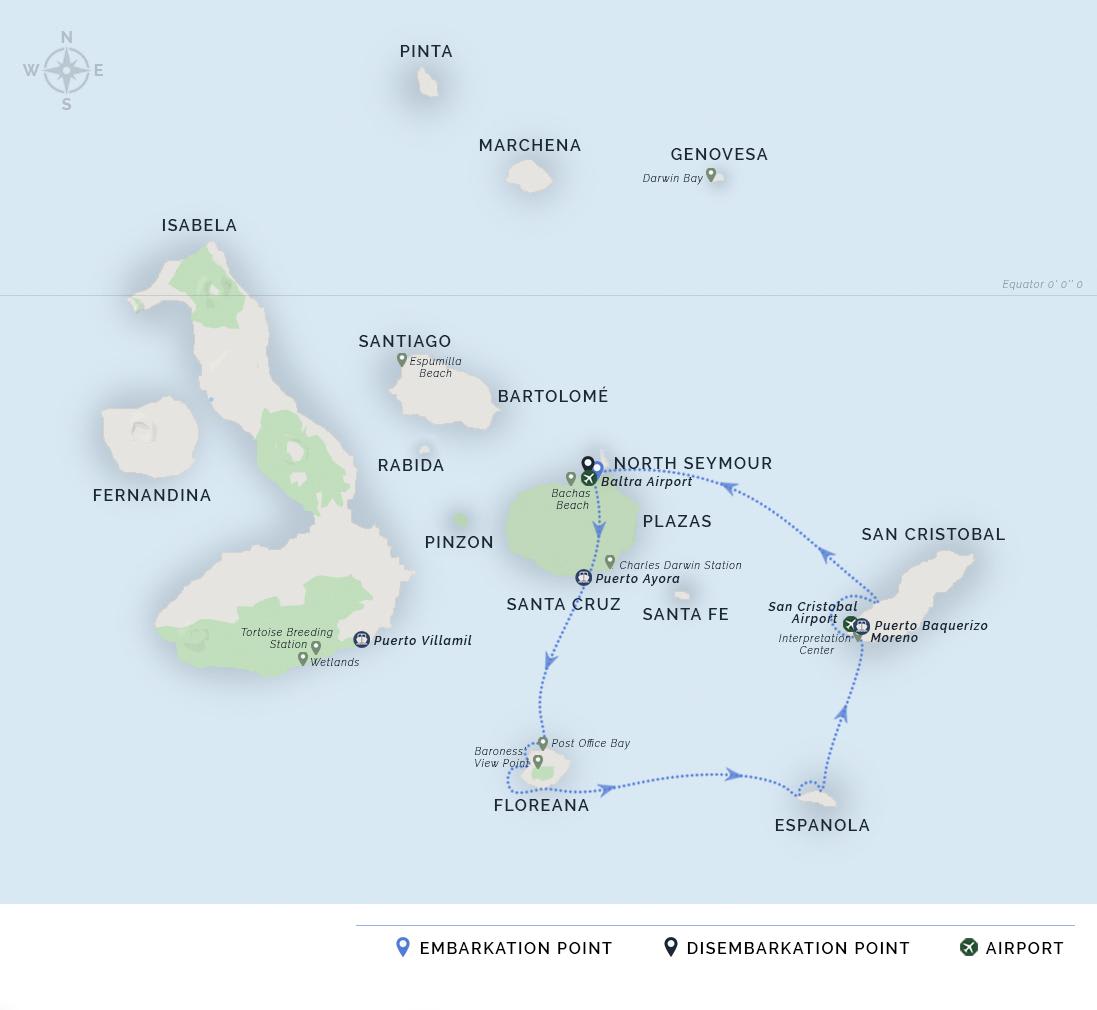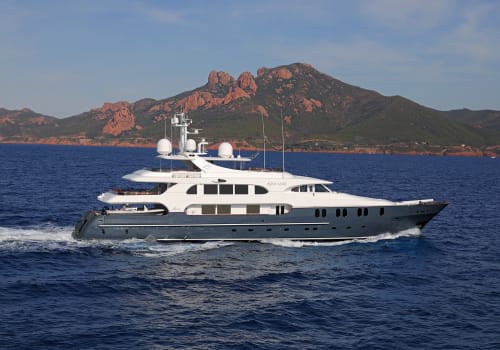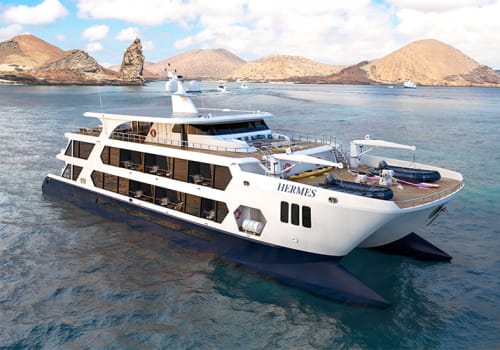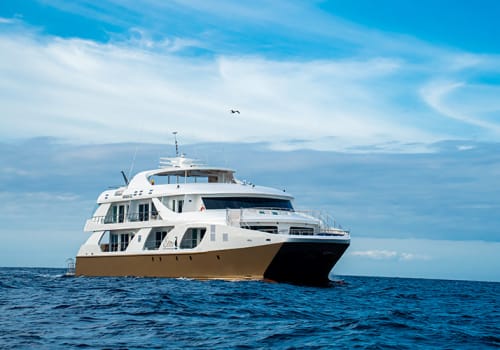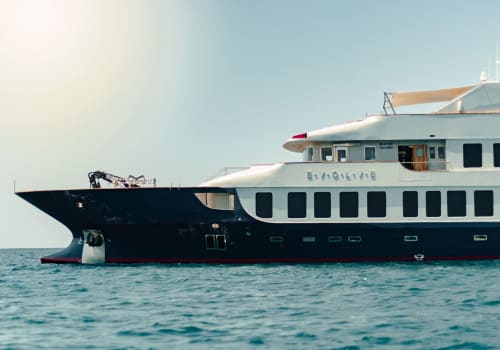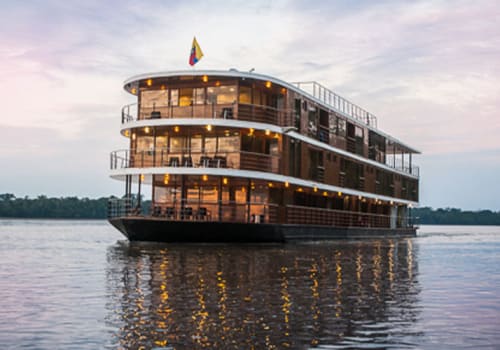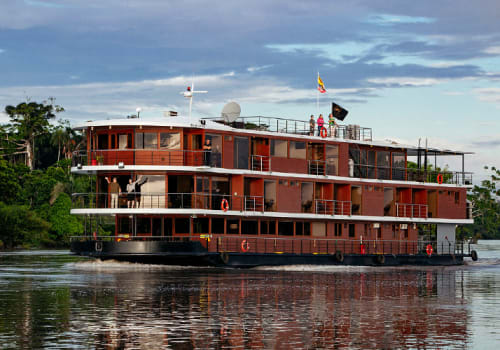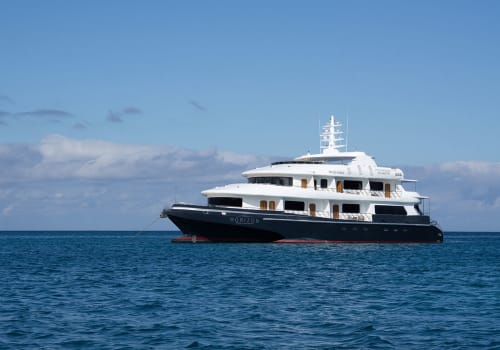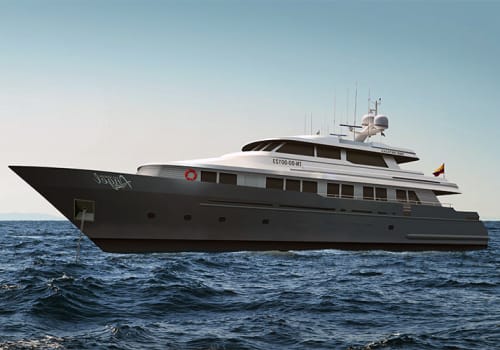

Bonita Yacht
Overview
The aptly name Bonita Yacht, which translates to “pretty” or “cute” in Spanish, offers adventurous and comfortable small-ship cruises to the Galapagos Islands for those seeking a more economical, eco-friendly expedition, navigating this world-renowned, wildlife-rich archipelago with a near-imperceptible ecological footprint at a price as attractive as its features.
Welcoming Cabins & Crew
Accommodating just 16 passengers in comfortable cabins and ample social areas spread out over 3 spacious decks, the Bonita Yacht’s contemporary and colorful interiors provide a welcoming and homely base from which to explore the Enchanted Isles. What’s more, the extremely friendly and professional 8-strong crew – consistently praised for their attention to detail and excellent customer service – will go out of their way to ensure your stay is one to remember for all the right reasons, including the onboard chef who will prepare deliciously decadent meals, desserts and drinks for your delectation to fuel your explorations.
A choice of accommodation is available, including triple, double and twin cabins. Each of the nine staterooms – which are thoughtfully attended to and regularly replenished with clean towels – feature sufficient storage space, charging ports, reading lights, air-conditioning and roomy private en-suite bathroom. The cabins located on the main and upper decks come with panoramic windows with great sea-views, and although the three lower deck cabins only have porthole windows, two are great options for families having triple occupancy with a single plus bunk beds.
Rest & Recreation
After full days of adventure accompanied by your acclaimed expert naturalist guide participating in all manner of activities such as hiking, snorkeling, paddle-boarding, kayaking, and boating around the mangroves of Galapagos, guests can relax in the inviting social areas, which includes the indoor lounge, dining room, library and fully-stocked bar, or simply enjoy the sea-breeze on the outdoor terrace or relax on the sundeck with its comfortable lazy-chair loungers and sunbeds and spectacular 360° views.
Itineraries aboard the Bonita Galapagos cruise vary from 4 – 6-nights, or can be combined for those wishing to stay longer and explore more of the islands. No matter which you choose, you’ll be immersed into the incredible volcanic landscapes, teeming waters and fascinating history of the Galapagos Islands amidst its famous and fearless inhabitants. Get up close to giant tortoises, dainty penguins, land and marine iguanas (and even rare hybrid ones), lazy sea lions and their playful pups, dancing blue-footed boobies and more on the trip of a lifetime aboard the Bonita Yacht.
Itineraries & Prices
All itineraries are subject to change due to seasonal weather conditions (and resultant variations in river and tributary water levels) affecting accessibility to locations. Thus navigation routes, times and excursions may need to be modified at the cruise captain’s or your guide's discretion.
Accommodations
Social Areas
Suites & Cabins



Upper Deck Cabin
The four upper deck cabins are situated with twin beds which may be converted to a double on request. Each cabin includes a private bathroom, hot water, air conditioning, telephone for internal communication on board and an internal loudspeaker. Amenities included are eco-friendly shampoo and soap.




Main Deck Cabin
Both of the main deck cabins are equipped with comfortable King-sized beds. Each cabin includes a private bathroom, hot water, air conditioning, telephone for internal communication on board and an internal loudspeaker. Amenities included are eco-friendly shampoo and soap.


Lower Deck Cabin
The three endemic-fauna decorated lower deck cabins only have porthole windows but are equally as comfortable. Two of the three are triple occupancy, with space-conscious bunk beds and an additional single bed for the third guest, while the third has twin beds. Each cabin includes a private bathroom, hot water, air conditioning, telephone for internal communication on board and an internal loudspeaker. Amenities included are eco-friendly shampoo and soap.







